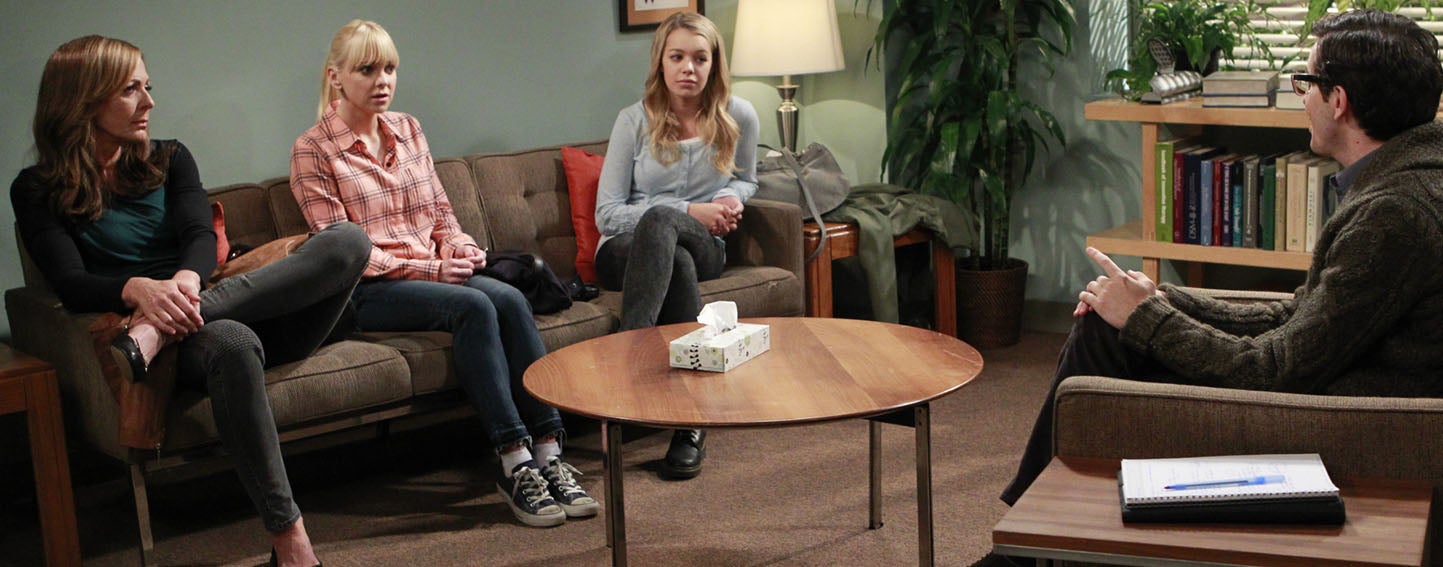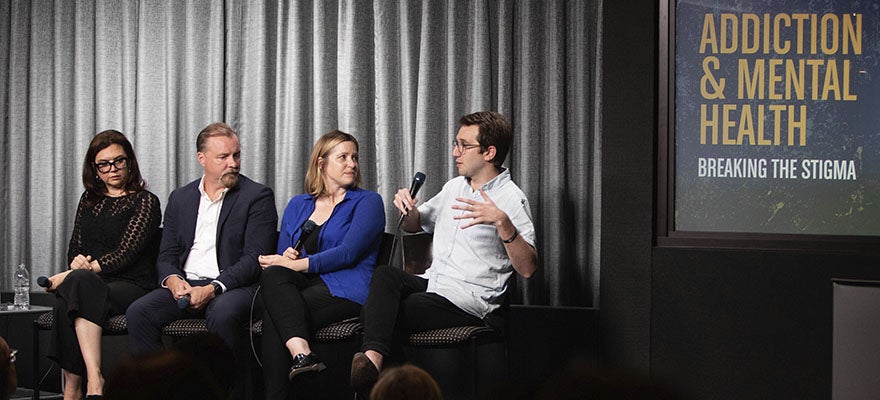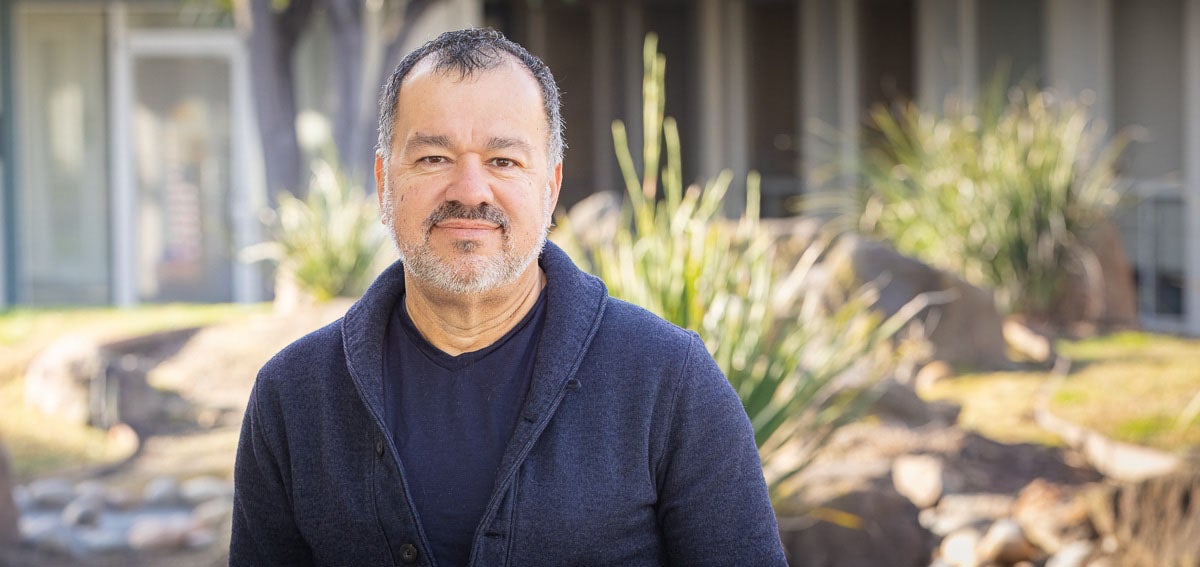
The camera pans to the therapist as she finishes scribbling a note and sets down her pen. “You’re a perfect candidate for buprenorphine,” she says to her patient. “Let’s get you to a doctor who can prescribe it.”

As far as we know, this is not a scene in a real TV show or movie, but it’s one that freelance journalist Zachary Siegel would like to see. Siegel, a journalism fellow at Northeastern University’s Health in Justice Action Lab, imagined this scene at a recent panel on addiction and mental health presented by Hollywood, Health & Society. (CHCF is a funder of the group).
To Siegel, who was treated for addiction himself eight years ago, this is an example of health messaging done right.
The messages we are exposed to through shows and movies can profoundly affect our knowledge, attitudes, and even behavior. Recognizing the power of entertainment, Hollywood, Health & Society (HH&S), a program of the USC Annenberg Norman Lear Center, provides writers and producers of films and TV shows with free and accurate resources on health, safety, and national security.
According to the panelists at the HH&S event, there is plenty of room for improvement in the way entertainment media depict behavioral health issues. Gemma Baker, cocreator and executive producer of the CBS show Mom, expressed her disappointment that recovery is often portrayed as dreary, joyless, and hopeless. “Recovery is not the end of the story,” she said. “It’s the beginning.”

That’s why Baker chose to start Mom in the beginning of the lead character’s recovery. “I love that we get to portray people with long-term recovery living full, vibrant lives and who choose to stay sober in the face of heartbreak by rallying around each other,” she told Danielle Turchiano and Amber Dowling of Variety. This, in turn, is likely why fellow panelist Corey Waller, MD, an expert in addiction medicine, said Mom is the only show portraying addiction that he can watch.
In 2016, the Mom team collaborated with former US Surgeon General Dr. Vivek H. Murthy to create a public service advertisement about addiction and drug overdose deaths. The PSA, which aired after an episode of Mom, urged people struggling with addiction to seek treatment, and it reminded viewers that addiction is a chronic illness, not a moral failing.
The latter point is important because, as Siegel writes in Vulture, “The cultural perception of addiction in America remains primarily one in which users are criminalized and accused of moral turpitude. . . . Efforts to destigmatize and humanize addiction run up against the entrenched view that only the weak-willed and reckless lose control of their drug use.”
In the article, he praises the TV show Euphoria, which premiered on HBO in June, for its honest portrayal of addiction infused with harm reduction messaging. For example, when the main character, Rue, played by Zendaya, accepts a drug dealer’s offer of fentanyl, a companion in the room tells his brother, “Go grab the Narcan, just in case.” Narcan is a brand name for naloxone, an emergency drug that saves lives by reversing opioid overdoses.
TV Shows Can Shape Understanding of Health Issues
As the US struggles with an opioid overdose crisis that kills more than 130 people per day, entertainment media provide opportunities to reach the general public with crucial health messages. According to the global marketing research firm Nielsen, US adults spent a daily average of four hours and ten minutes watching live TV in 2018. They devoted an additional 36 minutes a day watching time-shifted TV (recorded programming via DVR or video on demand).
Research suggests that entertainment media can shape viewers’ understanding of health-related issues and even modify their behavior. In the late nineties, researchers at the Kaiser Family Foundation collaborated with a writer and producer of the television medical drama ER to evaluate the effects of health information communicated through the show. They found that “51% of regular viewers said that they talked with family and friends about the health issues that were addressed on the show. A third said that they got information from ER that helped them to make health care choices.”
In Latin America, telenovelas — limited-run TV serial dramas — have been used for decades to deliver social change messages. In Mexico, the government was actively involved in promoting family planning in the 1970s. In 1974 it established the National Population Council (CONAPO) to design, operate, and evaluate public initiatives to regulate population growth. One of its initiatives involved the use of telenovelas to promote family planning. Acompáñame (Accompany Me) was the first telenovela to be broadcast and is largely credited with Mexico’s success with family planning.
The show aired during the 1977–78 season and portrayed three sisters who achieved harmony in their marriages by using family planning. During commercial breaks, viewers were encouraged to call CONAPO to request family planning information. According to the nonprofit Population Media Center, phone calls to CONAPO for such information increased from zero to an average of 500 per month, with many people mentioning Acompáñame as their motivation for calling. The enrollment of women in family planning clinics increased 33% in the year the telenovela aired (compared to a 1% decrease the previous year), and contraceptive sales increased 23% in one year (compared to a 7% increase the previous year).
Changing Depictions of Alcohol and Drug Use
At the HH&S event, moderator John August, a screenwriter known for Big Fish and the recent live-action film Aladdin, asked panelists to name one thing they wished the entertainment industry would stop portraying in shows or movies. August offered the first wish: “Can we please stop with the actual quantity of alcohol that we see characters drinking in movies and TV shows? . . . We all know that it’s tea or something in there, so they’re not actually drinking bourbon, but characters drink so much that they would be dead.”
Waller offered this: “Please stop portraying someone who’s in recovery from addiction as having a weakness inherently. And on the opposite side of that, don’t portray people who decide not to use drugs or drink as lame.”
He makes an important point. These depictions perpetuate dangerous stigmas that make it harder for people suffering from addiction to seek treatment and social support.
HH&S works with its partner organizations, including the US Centers for Disease Control and Prevention, to create tip sheets on health topics for writers and producers. CHCF supported the production of tip sheets about opioid safety and maternity care (PDF).
In Case You Missed It
CHCF president and CEO Sandra R. Hernández penned an op-ed in the San Francisco Chronicle about the Trump administration’s new public charge rule. Read it here.
Authors & Contributors





